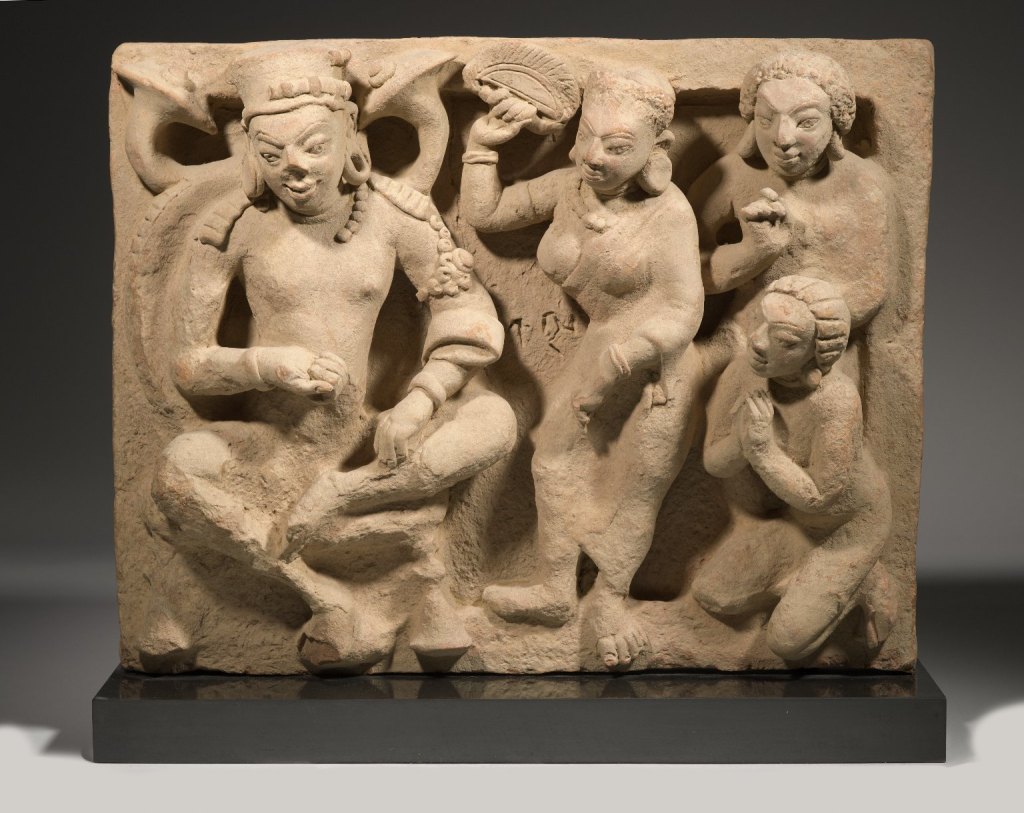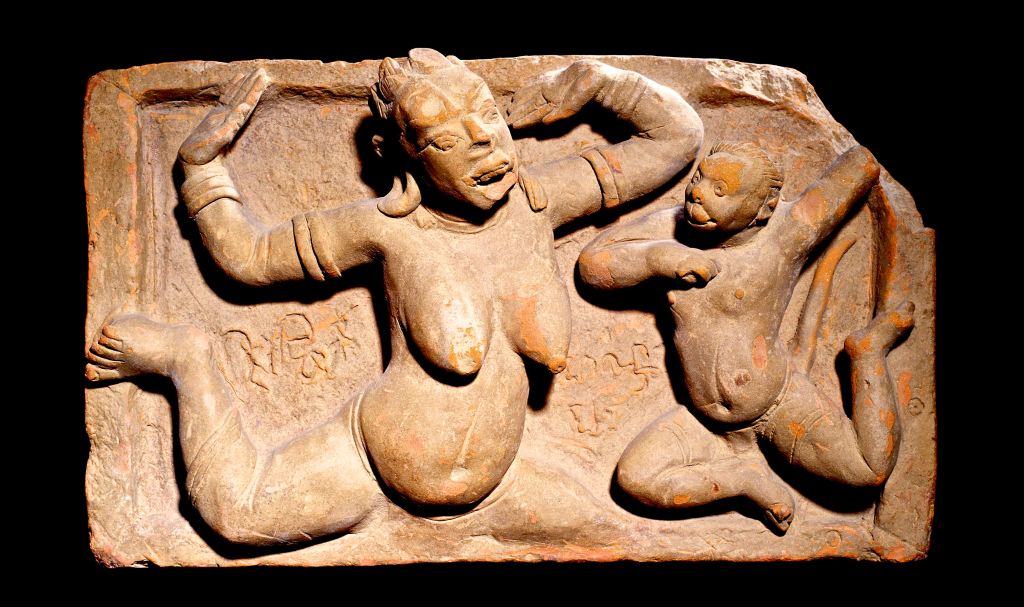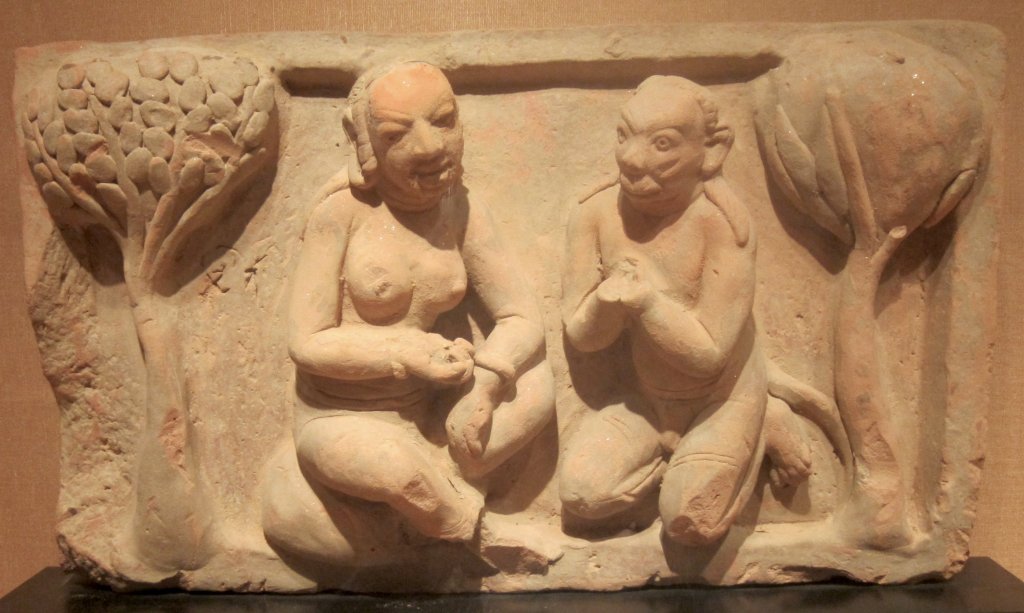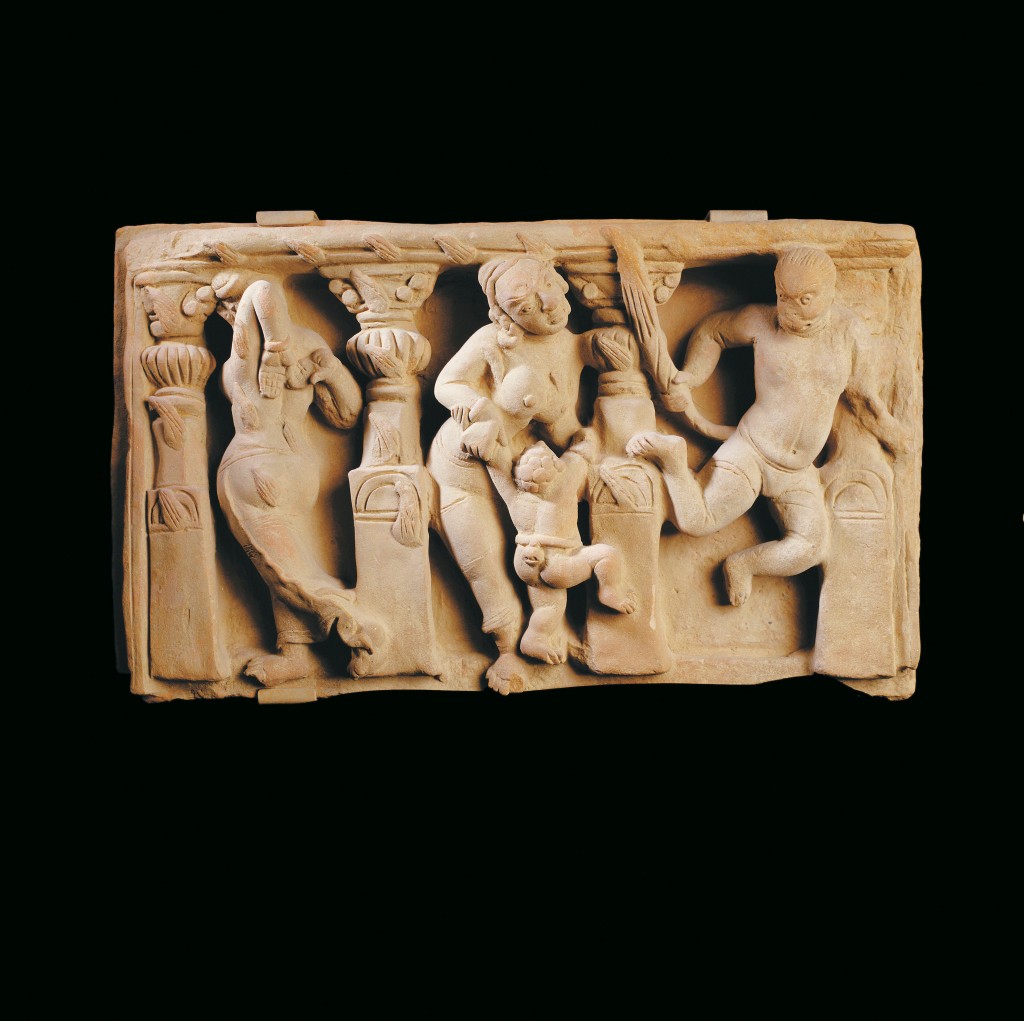The Rāmāyaṇa numbers among the world’s most enduring and beloved works of epic literature. Indeed, it continues to exert tremendous influence in the spheres of religion, culture and politics in South Asia and with Hindu communities globally. Yet visual manifestations of the textual narrative have been sidelined in epic studies despite their continued potency and efficacy; the shape and form they bring to the much-revered poem (in its various versions) most commonly transmitted orally; and their accessibility which transcends language and literacy barriers.
It was in the fifth-century CE that relief depictions of the Rāmāyaṇa embodied in stone, terracotta and stucco began to feature in the temple iconography of North and Central India, although, miniature terracotta plaques depicting Sītā’s abduction are found from the 1st century CE onwards.
Here, I bring together one of the earliest collections of fifth-century terracotta reliefs depicting scenes from the Rāmāyaṇa, and now scattered across numerous international museum and private collections. Surprisingly, the shared origin of these panels has not previously been noticed* despite all of the plaques having been made from terracotta of the same colour and texture, in addition to the remarkable likeness in style, scale and form between the panels. This oversight might, to some extent, be explained by the inferior position afforded to the medium of terracotta by art historians who have traditionally focused primarily on stone, bronze and painting (with numerous exceptions, of course). My research has been greatly aided by museum digital databases and online auction catalogues which have only become available in recent years.
The Rāmāyaṇa images form part of a substantial collection of around forty panels (known to me), some of which depict scenes from the Mahābhārata and Harivaṃśa, along with portrayals of celestial beings and mythical creatures. Importantly, a number of the panels are etched with short Brāhmī inscriptions, naming the characters depicted. The panels in the museum and private collections have each been described as hailing from the expansive North Indian state of Uttar Pradesh and their obscure provenance indicates that they were unearthed illegally.
In an illuminating essay on archaeological looting in India, the late Director-
General of the Archaeological Survey of India, Ajai Shankar, discloses that fifth-cen-
tury (Gupta period) ornamental bricks and inscribed terracotta panels depicting scenes
from the Rāmāyaṇa were illicitly unearthed by villagers at the bidding of antiquities
thieves, from twin mounds near the village of Katingara, beside the serpentine Kali River in District Etah, Uttar Pradesh. Since their removal, the whereabouts of the artefacts has been shrouded in mystery, Indeed, these pilfered panels were imagined irretrievably lost. The rarity of inscribed Gupta Rāmāyaṇa panels, however, led me to tentatively posit that the images I had collated might be the lost Katingara hoard. As it happened, a handful of plaque fragments recorded as originating from Katingara were purchased from a Delhi-based dealer, Mani Ram Godara, by the Gurukul Museum in Jhajjar, Haryana, in 1979. These images, which are kept in storage at the museum, remained under Shankar’s radar. The Gurukul Museum reliefs share the same charming, idiosyncratic style as the images I had already collated. It appears that the better-preserved pieces had been shipped internationally (along with some fragments) while the more eroded pieces remained in India.
In the summer of 2016 I visited Katingara. Here, the main temple mound is covered in alluvial deposits. Extensive digging has taken place on all sides of the mound, in the process removing virtually all evidence of the original structure. Baked brick fragments protrude from the disfigured earthen walls of the mound and are also scattered for some distance in the immediate vicinity. I was fortunate to discover a fragment of a carved brick close to the mound, which matches in motif, style, material and form, elements from several of the terracotta plaques already mentioned. This was the final piece of evidence (in the absence of scientific testing) needed to confidently affiliate the collated panels with Katingara.
The Katingara panels do not hold significance solely for their antiquity, or for their formative visual depictions of episodes from one of the world’s foremost epics, but also for their artistry and captivating effervescence. They display a singular aesthetic, especially noticeable in the masterful approach to composition, which might be described as bold, dynamic, acutely-theatrical, minimalistic and brimming with wide-ranging emotion.
These panels and the background history are explored at length in my recently published paper:
Locating the Lost Gupta Period Rāmāyaṇa Reliefs from Katingara, Uttar Pradesh (Part I) , Religions of South Asia Journal 12.2. (2018), pp. 117-153. http://journals.equinoxpub.com/ROSA/article/view/38806
And the remaining panels will be analysed in a forthcoming paper on ‘The Līlās of Kṛṣṇa and Other Stories: Epic Myths on Terracotta Reliefs from Katingara, Etah District, Uttar Pradesh’.











*The wonderfully named Joseph M. Dye III, erstwhile curator of South Asian Art at the Virginia Museum of Fine Arts (VMFA), did note the overwhelming similarity between two images which I have assigned to Katingara, one of them, pictured above, in the VFMA. See Dye III, Joseph m. 2001. The Arts of India: Virginia Museum of Fine Arts. Richmond, va: Philip Wilson. 113.